1.Bhangarh Fort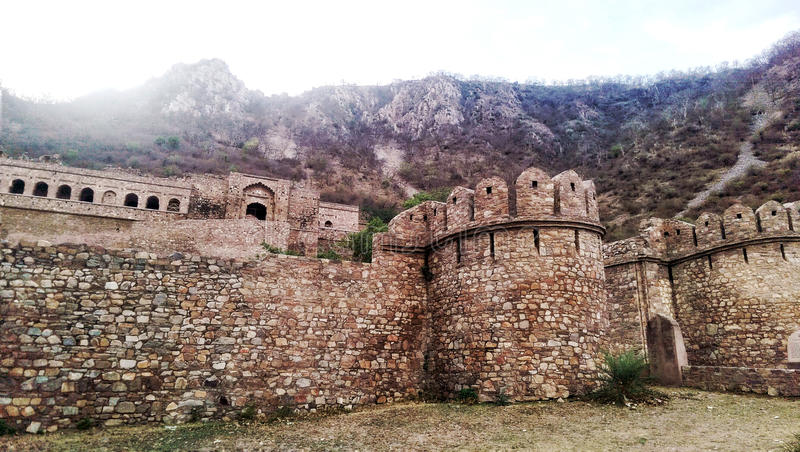
As we drove up to the fort of Bhangarh in Alwar district of Rajasthan, from the Sariska Tiger Reserve, we passed by the Ajabgarh fort. Since entry into Bhangarh is restricted after sunset, we were in a hurry. I didn’t climb up the Ajabgarh fort, but I explored its base. A local lad grazing sheep told me that there was nothing that I would be able to see from below except the four walls. If I had known its significance in the destiny of the fort I was going to, I would have made more of an effort.
The drive to Bhangarh fort was eerie. We passed through a village that was ostensibly inhabited. The main road was lined with the ruins of once-beautiful havelis. Children were seated in front of intricately carved wooden doors that had large rusted locks.
The Bhangarh fort was built by the Kachwaha ruler of Amber, Raja Bhagwant Singh, for his younger son Madho Singh in 1573 AD. Madho Singh’s brother was the celebrated Man Singh, who was Akbar’s general. Madho Singh was succeeded by his son Chatr Singh. It was Chatr Singh’s son Ajab Singh who built the fort of Ajabgarh.
Though it was midday, it seemed quite lonely, and a long walk, so we hired a local guide. Guides after all tell the most colourful tales and sensational gossip!
A tantrik’s curse
The guide told us of the beautiful princess Ratnavati, who was the daughter of Chatr Singh. She was the jewel of Rajasthan. Ratnavati was much younger than her stepbrother Ajab Singh, and was as universally liked as he was disliked. Tales of her beauty and delightful temperament spread far and wide and she received many marriage proposals. A tantrik priest, who was well versed in black magic, fell in love with her. But knowing that he didn’t stand a chance with the beautiful princess, he tried to cast a spell on her. Seeing the princess’ maid buying perfume for her in the village, he cast a spell on it so that Ratnavati would fall in love with him. Ratnavati came to know of this and threw the bottle. It turned into a boulder and hit the tantrik. He was crushed under its weight, but before he died, he cursed the princess, her family, and the entire village. The next year, a battle was fought between the forces of Bhangarh and Ajabgarh, which led to the death of Ratnavati and most of the army.
The guide solemnly told us that it was due to this curse that no one in the village or fort could be reborn; it is forever condemned to desolation and is inhabited by ghosts. If any villager tries to build a roof, it apparently mysteriously collapses.
We were told another story too. Apparently there was a sadhu, Guru Balu Nath, living on top of the hill on which Raja Bhagwant Singh built the fort. His only condition for letting the fort be built there was that it should never cast a shadow on his dwelling. This condition was honoured by all except Ajab Singh, who added columns to the fort that cast a shadow on the ascetic’s house. The angry sadhu’s curse led to the ruin of the fort and the surrounding villages. A small stone hut, known as tantrik ki chatri, overlooks the fort.
The truth seems to be that after Chatr Singh’s death, since Ajab Singh had already established a new fort, the population of the area dwindled. A famine in 1783 forced the remaining villagers to seek new avenues. In 1720, Raja Jai Singh, grandson of Man Singh, attached Bhangarh to his estate.
importance
The Bhangarh fort was built by the Kachwaha ruler of Amber, Raja Bhagwant Singh, for his younger son Madho Singh in 1573 AD. Madho Singh’s brother was the celebrated Man Singh, who was Akbar’s general. Madho Singh was succeeded by his son Chatr Singh. It was Chatr Singh’s son Ajab Singh who built the fort of Ajabgarh.
Best Time To Visit
The recommended timings of Bhangarh Fort are 6 AM to 6 PM, i.e. before sunset and post sunrise. So, note down the opening time of Bhangarh Fort, and avoid visiting here once dusk settles, for it’s forbidden to visit here when there is no visibility around.
2.Bagru Village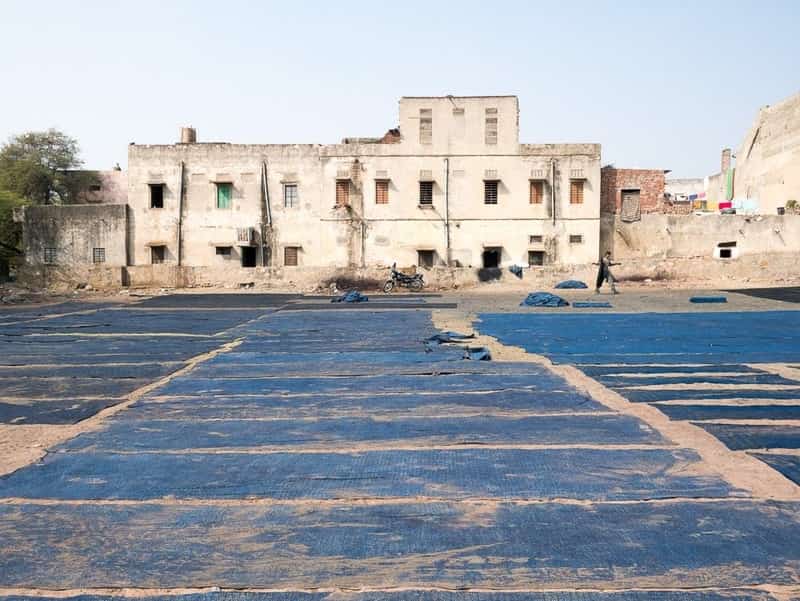
Bagru is a small village in Rajastan on Jaipur-Ajmer road located at a distance of 35 kilometers from Jaipur. It’s not for any palace or fort that Bagru is popular; it is the classic wooden block printing of Bagru which is considered unparalleled. The prints which are popularly known as ‘Bagru Prints’ make the village a crafts centre well known in Jaipur and in surrounding areas. These unique wooden printing techniques employ wooden blocks where the design is first engraved on the block which is further used to replicate the design on the preferred fabric. Apart from this, Bagru craft is also famous for its ecological consciousness and the use of traditional dyes. The brilliance of this age old craft, which is kept alive by the natives, makes Bagru a perfect tourist destination for those people who are crazy about textile printing. Read on to know more about Bagru and the textile printing that it is famous for.
Bagru
Bagru Prints JaipurBagru is a small village in Rajastan on Jaipur-Ajmer road located at a distance of 35 kilometers from Jaipur. It’s not for any palace or fort that Bagru is popular; it is the classic wooden block printing of Bagru which is considered unparalleled. The prints which are popularly known as ‘Bagru Prints’ make the village a crafts centre well known in Jaipur and in surrounding areas. These unique wooden printing techniques employ wooden blocks where the design is first engraved on the block which is further used to replicate the design on the preferred fabric. Apart from this, Bagru craft is also famous for its ecological consciousness and the use of traditional dyes. The brilliance of this age old craft, which is kept alive by the natives, makes Bagru a perfect tourist destination for those people who are crazy about textile printing. Read on to know more about Bagru and the textile printing that it is famous for.
Bagru is popular for block or wooden printing. Commonly known as ‘Bagru Prints’, creating these designs involves an exclusive technique in which the preferred design is carved on a wooden block which is further used to reproduce the same design on the preferred fabric. The print patterns are known by the name, ‘ajrakh’. The origin of this traditional craft can be dated back to three hundred years, thanks to the efforts of Chippa Mohalla, the craftsmen of Bagru who preserved it to avoid its untimely death. A walk along this specific area of the village would take you to almost three dozen families who work on this unique type of printing with blocks and dyes. These craftsmen, following the original tradition, wipe the cloth with fuller’s earth and immerse it in turmeric water to provide the cloth with the customary cream colour. Following this, various designs are embossed on the fabric, with the help of natural dyes.
It is said that these people use simple and eco-friendly tools along with turmeric and natural and vegetable dyes to print the cloth. The craftsmen make blue colour from indigo, red colour from madder root, green from indigo mixed with pomegranate juice and yellow from turmeric. Excellent bed covers and other materials are manufactured by these villagers
Importance
The village town is not popular for any palace or fort but for keeping alive the three-centuries-old tradition of printing with the splendid efforts of artisans. It is unique for its indigenous style of printing using natural colours with wooden blocks known as ‘Bagru printing’.
The Best Time To Visit
The cool months of October to March are the best time to visit Bagru in Rajasthan.
Bagru prints have already marked their name in the fashion industry. For those who are crazy about textile printing or wooden or block printing, this craft centre is one which is worth exploring.
3.Achrol Fort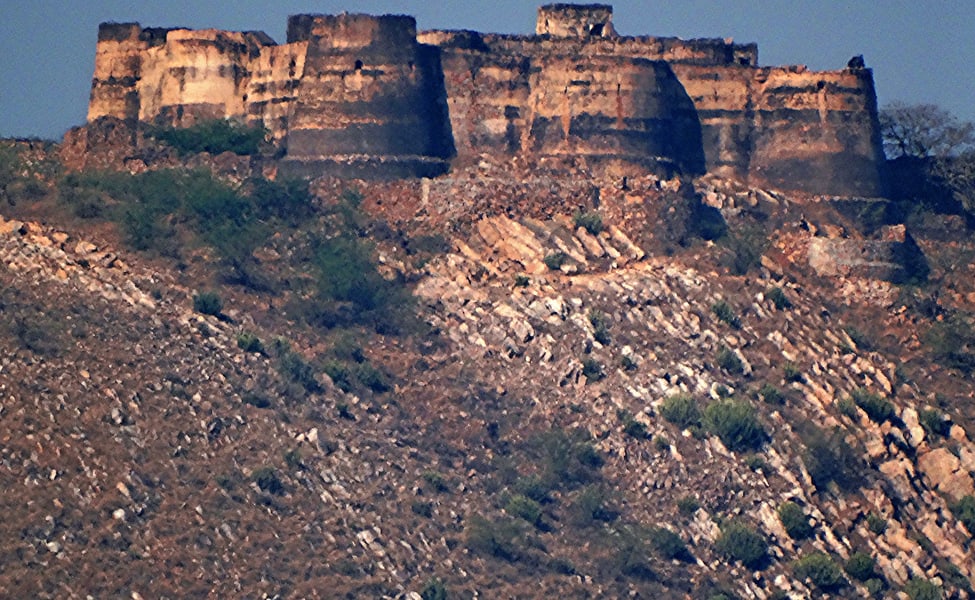
The Achrol Fort and Palace is actually an old haveli, or a large residential complex, located inside Achrol village. Hidden away from the busy Jaipur-Delhi Highway, the village also houses some more old havelis, but it is all in all a very small village. The fort belongs to the Achrol Thikana family, who were an extended relative of the Kachhawa rulers of Jaipur.
Not a lot is known about this palace, and official records about the history of the palace are non-existence, except the fact that the Achrol Thikana dates back to 1550 A.D. Because of it’s near invisibility, there is a considerable lack of attention and preservation of this palace.
While there seems to have been some attempts at restoring the palace, it wasn’t ever finished. The fort in itself was used for military and strategic purposes, while the haveli was used as a residential quarter. The fort has a wide panoramic view, and beautiful, unique architecture.
Achrol Fort is a beautiful wonderful miraculous fort located in Jaipur in the state of Rajasthan, India. Whose history goes back to ancient times. Friends, it was established here in the time of 1564 AD by Achaldas, the ruler of Balabhadroho branch of Amber and Jaipur dynasty of Rajasthan.
Importance
The fort in itself was used for military and strategic purposes, while the haveli was used as a residential quarter. The fort has a wide panoramic view, and beautiful, unique architecture Rajasthan Monuments.
Best Time To Visit
October to March
4.Dausa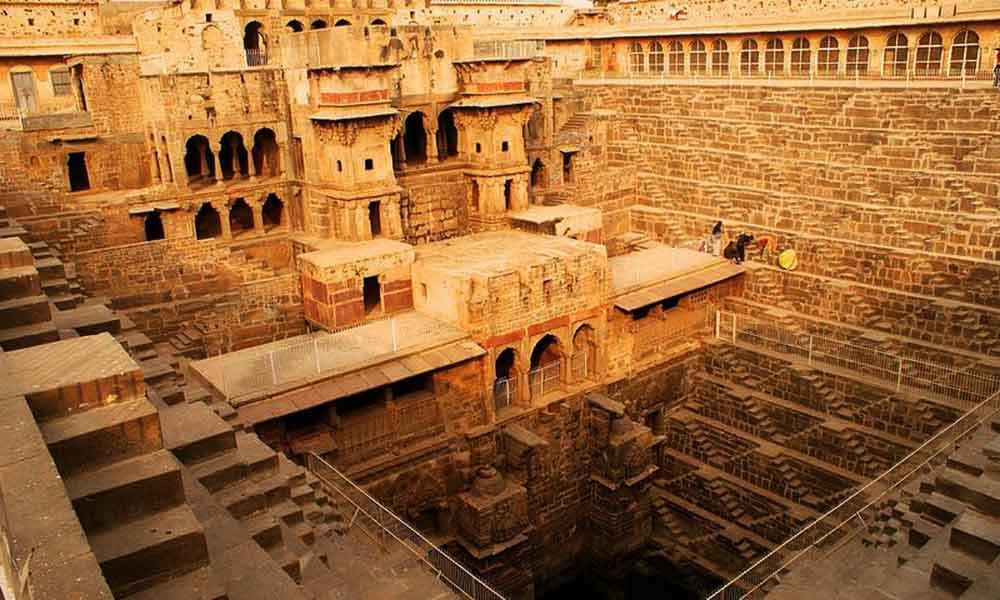
Dausa also known by the name Devanagari is a city located in the Dausa district of Rajasthan. It is situated approximately 55km away from the main city of Jaipur and serves as the administrative headquarters of the Dausa district. Dausa is such a popular holiday destination that most visitors usually include this place in their tourism package while visiting Rajasthan.
The city of Dausa has much legend and history lying behind it. Several stories even go on to explain how during the 10th century AD, well-known rulers such as the Chouhans and Badgurjars while ruling over Rajasthan, claimed Dausa as the first capital of the state. Dausa clearly held much political importance at that time and it still holds the same position even today.
One of the best parts about Dausa is that the city is surrounded by Mahadev from all give directions namely Nilkanth, Sahajnath, Somnath, Baijnath and Gupteshwar. One of the major reasons why the place is also known by the word ‘Dhau and Sa’ is due to this situation. ‘Dhau and Sa’ literally translates to Swarg meaning heaven and Sa meaning Sundar.
The place is well known for many popular activities. The culture is typical to Rajasthan and one will have the chance to experience an authentic rural life as well. There are several high-end hotels, resorts and restaurants that will not fail to fulfil your primary requirements of great comfort and good food. As far as convenience is concerned, it is well taken care of since the city is well connected with an abundance of local transport at hand. Moreover, the people belonging to this city are known for their friendly nature and simplicity – all of which will win your heart over.
Importance
History. Dausa is situated in a region widely known as Dundhar. The Meenas, Chauhans and Badgurjars ruled this land in 10th Century A.D. Dausa has privileged to become first capital of the then Dundhar Region. The Chauhan Raja Soodh Dev ruled this region during 996 to 1006 AD.
Best Time to Visit
October to March
5.Sambhar Lake
Sambhar Lake in Rajasthan is also known as ” Salt Lake of Rajasthan” is the largest inland salt lake in India. Spread in the 22.5 km area, this India’s largest inland salt lake also regarded as a ‘Gift from Thar desert’. This saline lake is divided by a 5.1 km long dam which helps in salt making. The water is fed to the lake mainly from river Mendha and Runpangarh. Salt laboratory and the Salt museum are some worthy places to visit nearby the lake.
ccording to the mythology, during Mahabharata period demon priest Sukracharya lived here and he married his daughter Devayani to the King Yayati, the emperor of India.
Devayani temple is situated here till now. During excavation a large number of terracotta figurines, stoneware, and decorated discs were found which are now kept in Albert Museum in Jaipur.
Importance
Sambhar Salt Lake is India’s largest saline lake and is the source of most of Rajasthan’s salt production. It produces 196,000 tonnes of clean salt every year, which is around 9% of India’s salt production.
Best Time To Visit
The best time to visit Sambhar Wildlife Sanctuary and the lake is from October to March. Travelling to Sambhar from June to September should be avoided as this is the monsoon season
6.Shivad Temple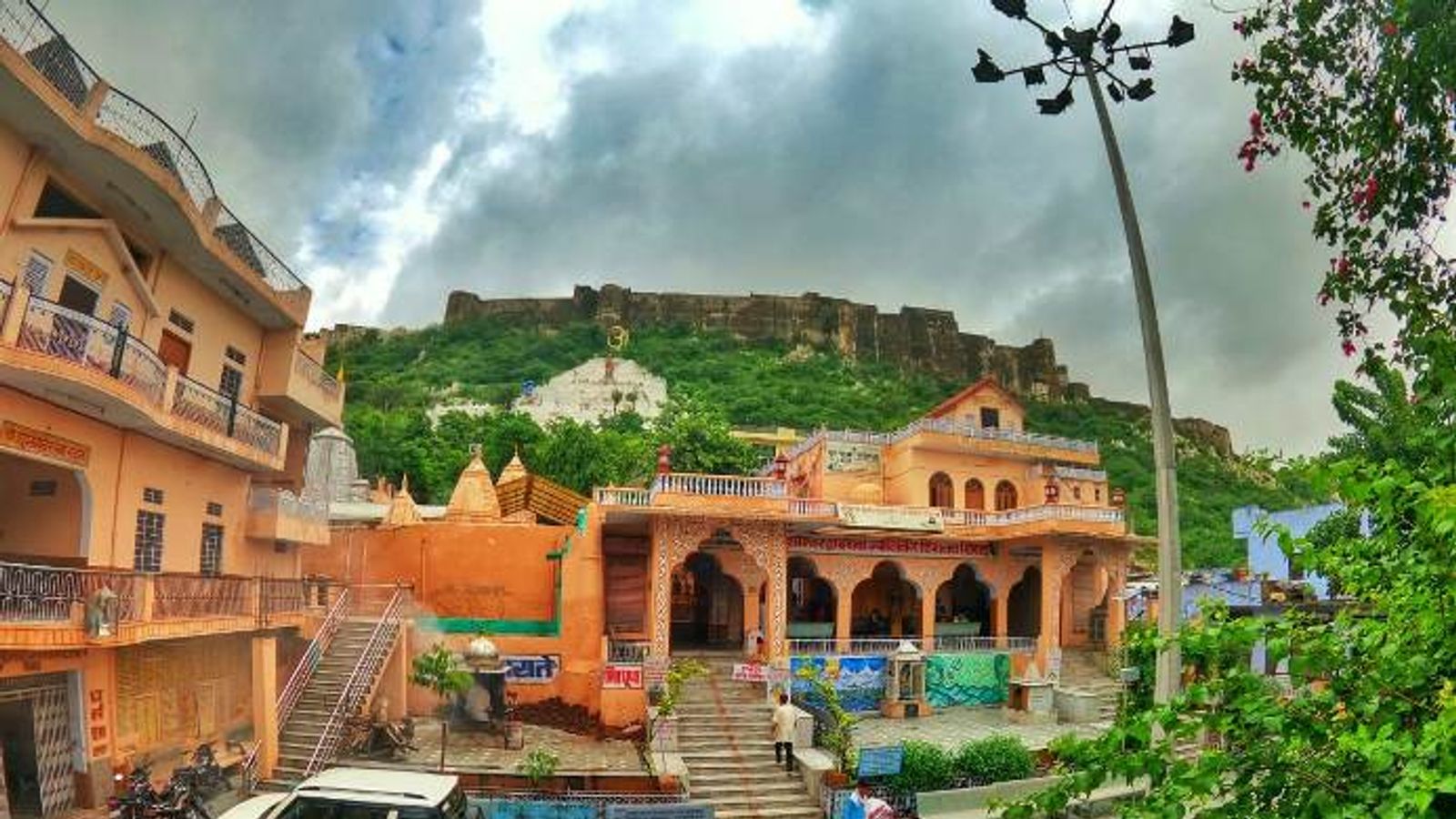
Shree Ghushmeshwar trust welcomes you to the holy place of the 12th Jyotirlinga. Ghushmeshwar Jyotirling is abode of Lord Shankar. Its abode is nestled in the picturesque Devgiri hills in Shiwar, District Sawai Madhopur, State of Rajasthan in India, 100kms from Jaipur-the state capital. It lies 3km from Isarda railway station by the side of kota-jaipur rail route. Niwai Shivad Temple is around 90 KMs from Sawai Madhopur. From Jaipur Shivad temple is 70KMs via Niwai.
Also known as the name of Shree Ghushmeshwar Jyotirling. Dedicated to Lord Shiva, ancient Shivad Temple is situated next to a small old fort. This is an ancient temple of Lord Shiva with modern presentation of different God & Goddesses under the old fort. This is worthwhile to see and is a very good picnic spot surrounded by Mountains and Natural Water Pond. It is also known as Dwadash (12th) Jyotirlingas of Lord Siva.
Shri ghushmeshwar jyotirlinga(shivalya), is situated at shiwar village of distt Sawai Madhopur, Rajasthan and lies at 3 kms off Isarda railway station along kota-jaipur rail route. It is by its worshippers hailed as 12th Jyotirlinga of loard shiva on the basis of a plethora of evidence deducated from location, folk tales and architectural and geographical facts enshired in ‘ puranas’ legend has it that a Brahmin, by name Sudharma lived in distant past in vicinity of Devagiri hills, whose wife Sudeha, had not been blessed with offspring. She is therefore, got her younger sister Ghushma married to her husband.
Ghushma was a devotee of lord Shiv, whose devotion to Great Loard mahadeva got herthe birth of a son from her husband. Sudeha, her elder sister, got envious of Ghusma’s honour and happiness, which ultimately resulted in assassination ofnewly married son of Ghushma whose used to dispose the parthiva Shiv Lingas everyday after worshiping. By the next morning when the bride found the bed os her mother-in-law. On information Ghushma did not lose her temper and she kept worshiping as usual.
The following day Lord shiva gave his ‘Darshan’ by appearing before Ghushma when she was immersing idols of Lord Shiva after worship. pleased by her devotion Lord Shiva not only resurrected her son but also granted a boon to her that he would always abide in this place as Ghushmeshwar after the name of Ghushma.
On the basis of historical facts it came to picture that Mohmood Gajnavi sent his army commander Masood with army to loot & damage this famous welknown temple in Vikram Samvat 1081. Maharaja Chander Sen Gaur along with his son Indrasen,Army chief Rewat & 3000 Army men got died in presening the temple from enemies in battle.In the memory of death of queen & priestess there are memorials. Letter on in 1179 the temple was rebuild by king shiv veer singh chauhan.The king invited two welknown brahmins from Mahrishi Vashishtha Origin from Pushkar for worship of tample.
In the year of 1358, en route ranthmbhor to fight Rana Hamir,Khilji sent army unit under malik kafur to destroy the newly built temple. The army unit caused big devaststion to village and granaries.The army unit also began dismantling the temple but had to stop owing to night. In the dream that night Khilji saw a half nacked tri-eyed,trident handling, Kamndaldhari,exotic personalty prepared to kill him. A feared Khilji could not sleep the whole night The next morning he revealed the dream.Then the pujari of the temple told him that the deity in the dream was none other then lord Shiva him self who can turn the universe into ashes just by the fire of his 3rd eye.Hearing this a feared Khilji decided not to destory the temple and proceeded for Ranthmbhor.
7.Khatu Shyam Ji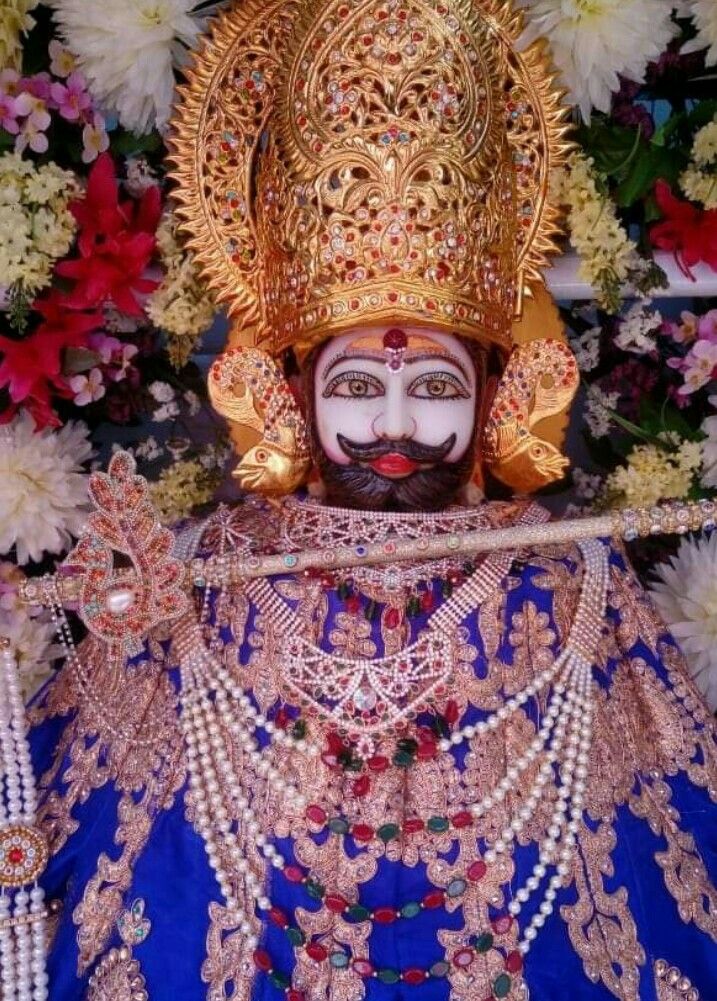
King Duryodhana of the Kaurava dynasty had built a lakshgriha to harass and kill the innocent Pandavas, but fortunately they escaped from it and started living in exile.
Once when he was sleeping in the forest, a demon named Hidamba lived near that place along with his sister Hidimbi. Then when they smelled of humans (Pandavas), seeing them, this demon said to his sister, kill these humans and bring them to me.
On the orders of her brother, she came to the place where all the brothers were sleeping with Draupadi nearby. And Bhima was awake in their protection. Seeing the form of Bhima, Hidimbi was fascinated by him and started thinking in his mind that this could be the suitable husband for me.
He accepted Bhima as her husband, regardless of his brother. After some time Hidimbi did not return, Hidimbasura came there and got angry seeing his sister talking to Bhima in the beautiful disguise of a woman.
After that, with the persuasion of Hidimbi, by the decision of mother Kunti and Yudhishthira, both of them got Gandharva marriage. During the above period, Hidimbi became pregnant and gave birth to a great son. Being childless, the boy was named Ghatotkach.
Hidimba said that the time of my stay with Bhima has ended and she went to her abhishek place, asking to meet again if necessary. Along with this, Ghatotkach also bowed down to everyone and took orders and went towards the north direction.
Soon, at the behest of Krishna, a Gandharva was married to Kamkantaka, the girl of Murdetya in Manipur, and after some time, gave birth to a great mighty son, whose beautiful hair like a lion, named him Barbarika.
For the attainment of strength, by worshiping the goddesses continuously, he got the boon of such a rare incomparable force in any of the three worlds. The goddesses asked Barbarik to stay there for some time and said that a Brahmin named Vijay would come. You will have more welfare in their company.
As ordered, Barbareek started living there. Then the victorious brahmin of Magadha country came there and worshiped the seven Shivlingas as well as worshiped the goddesses for the success of learning. In a dream to the Brahmin, he said that do spiritual practice in the courtyard in front of Siddha Mata, Barbarik will help you.
-By the order of the Brahmin, Barbarika sent all the demons who obstructed the sadhana to Yamaloka. After killing those asuras, the king of serpents Vansuki came there and asked Barbarik to ask for charity.
Then Barbarik asked for this boon if the uninterrupted penance of victory was successful. After the Brahmin’s penance was successful, he gave a boon to Barbarika to be victorious in the war. After that, the gods gave the blessings to Vijay, since then his name was Sidghasena.
After some time, preparations for the war between the Kauravas and the Pandavas started in the Kurukshetra field. On this occasion, Barbarik was also coming riding on his bright blue horse.
Then on the way, Lord Shri Krishna approached him in the guise of a Brahmin to test Barbarik. God asked him to know the mind of Barbareek, on whose behalf you have come to fight the war, then Barbareek said that
The weak side will be on his behalf and I will fight in the war
God said to Barbarik that how can you destroy the whole army with three arrows? Then Barbarik said that all the leaves of the Peepal tree in front should be marked with one arrow and the other would pierce it.
Krishna hid two leaves under his fist and feet, but on seeing all the leaves were tied with one arrow in a moment, then Shri Krishna saw that in fact it can send everyone to Yamaloka at once.
Then Shri Krishna, who became a Brahmin, pleaded with Barbarik, then Barbarik said! What do the Brahmins want, then Shri Krishna said that what is the proof that I will ask for, I will get it.
Then Barbarik said, when you have spoken about the word, you will get it if you ask for life. So Natwar said in disguise of Brahmin, I want your head donation.
Hearing this, Barbarika was shocked and said that I will happily fulfill my promise, but tell the truth, who are you, then Krishna, while telling his vast form, said that I thought that if you participate in the war, then both the families will be completely destroyed.
Then Barbarik said that you take the donation of my head, but I have one wish that I can see the war till the end. Then God said that this wish of yours will be fulfilled, then Barbarik cut his head and gave it.
With the help of nectar roots, the head was installed on the peepal tree, the highest peak of the mountain. The Pandavas were victorious in the battle that lasted for 18 days, as well as they were proud of their victory, then Krishna took them all to the place where the head of Barbarika was installed.
In front of Barbarik, the Pandavas started praising their valor. Then the head of Barbarik said that it is pointless to boast of all of you. Victory has been achieved only by the blessings of Shri Krishna.
I had seen only the Sudarshan Chakra of Shri Krishna running in this war, after which Barbarik became silent and flowers started raining from the sky. Then Lord Krishna pleased and gave a boon to Barbarik that in Kaliyuga, you will be worshiped in my name Shyam and all your desires will be fulfilled by your remembrance.
Importance
The relation of Baba Khatu Shyam is believed to be from the Mahabharata period. He was the grandson of Panduputra Bhima. There is a story that being impressed by the immense power and ability of Khatu Shyam, Shri Krishna granted him a boon to be worshiped in his name in Kaliyuga. In the incident of Lakshagriha, the Pandavas, wandering from forest to forest after saving their lives, met a demonic named Hidimba.
Best Time To Visit
October to March are the best months to visit Sikar. Falling in Rajasthan, Sikar experiences extremely hot and semi-arid summers with temperature going as high as 45 to 50 degrees Celsius. Starting from October, as the temperature begins to fall, the weather becomes pleasant to support tourist excursions. From October- March, you might need a pair of light woollens to carry along.
8.Chand Baori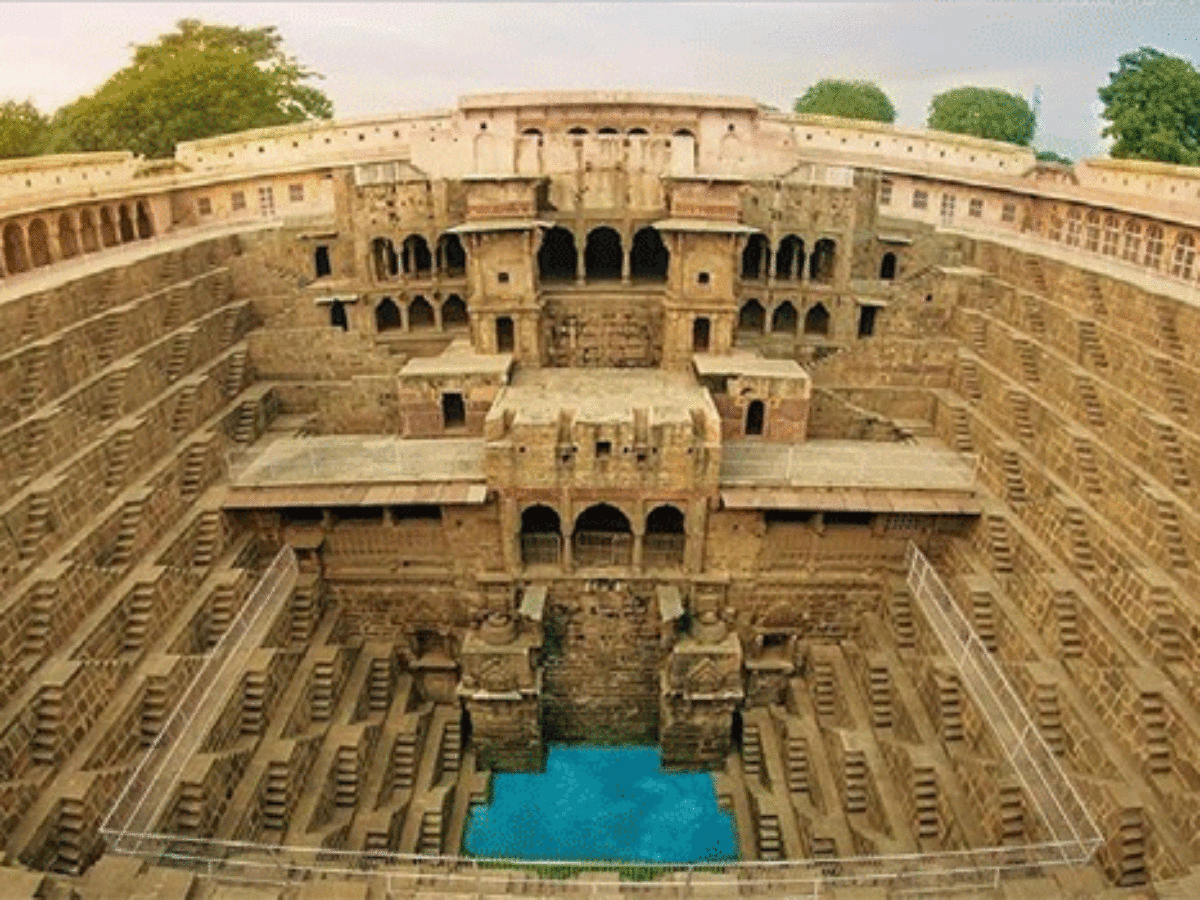
Chand Baori is arguably Rajasthan’s most impressive stepwell. Extremely beautiful and relatively tricky to find, Chand Baori is a popular spot for tourists and locals alike.
Stepwells are found across India: in a climate that is highly dependent on monsoon season to provide water, stepwells allow access to a pool of water year-round, no matter what the level, thanks to their often ornate and unique stairs. Whilst they are fundamentally pretty utilitarian, many stepwells have lavish ornamentation, embellishments or also function as temples. Today, some are in operation still, but others are simply used as swimming spots or to find respite from the heat. It’s typically 5 or 6 degrees cooler at the bottom of the stepwell than the surface temperature, so these spaces still make for popular meeting points.
Chand Baori dates from the 8th century, and is believed to be named after a local ruler, Raja Chanda. Originally a palace would have been built around the top of the site: these rooms still exist but are not accessible by visitors.
The Mughals later expanded on the baori in the 18th century, adding the columned arcade around the top, along with assorted Islamic architectural features. The stepwell has 3500 steps (13 stories), cut in a geometric criss-cross pattern. The stepwell as seen today is much like it would have been in the 8th century.
It remains a popular destination for tourists despite its isolated location, and appears in multiple Bollywood films, as well as the 2012 film The Dark Knight Rises.
Importance
Built by King Chanda of the Nikumbha dynasty in 9th century AD, it is one of the largest stepwells in the world. Chand Baori was built to conserve water and provide a respite from the intense desert heat.
Best Time To Visit
The entry timings to Chand Baori Abhaneri are between 8:00 AM to 6:00 PM. There is no entry fee. Best time to visit Chand Baori Abhaneri: The best time to visit Chand Baori Abhaneri is between October to March when the weather is comparatively pleasant.
9.Kishangarh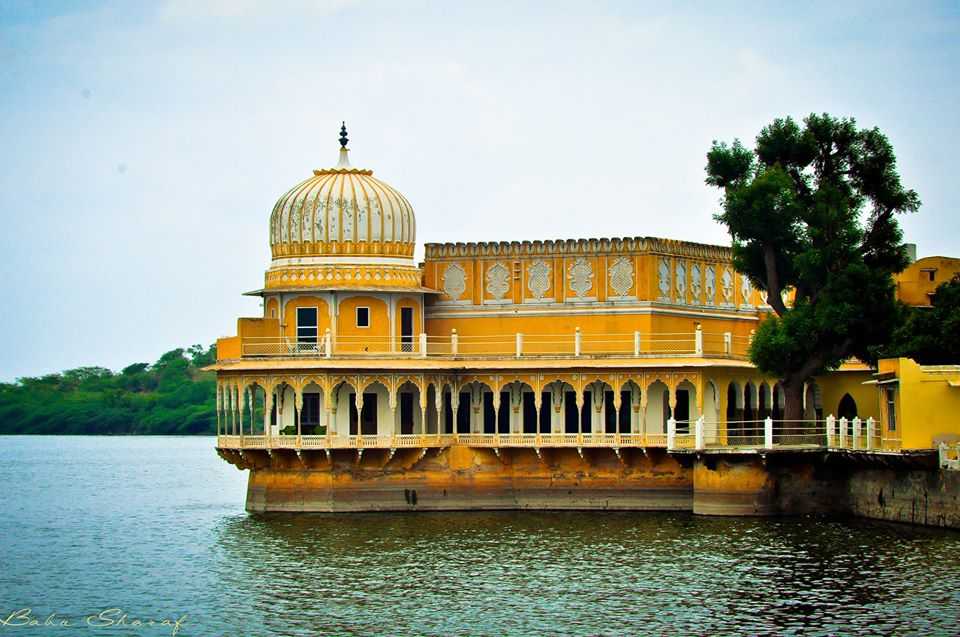
Kishangarh is a city in Ajmer District of Rajasthan. It was first established by Kishan Singh the prince of Jodhpur State in the 16th century. The city of Kishangarh is also known as the Marble town of India. This city was the capital of Rajputana during the British Raj period. The city is famous for Bani Thani more than Kishangarh fort & palace. Bani Thani was a great poet & singer dunging the 17th century in Kishangarh. If you every visit Rajasthan, you already have seen this picture of Bani Thani.
Best Places to Explore in Kishangarh City
1.Kishangarh Fort
Kishangarh Fort is a large and beautiful fort and it is on the right side of Gundolaw Lake in the center of Kishangarh city. This fort was built by King Roop Singh in the mid 16th century. But, you can’t enter in the fort till you’re the paying guests of Phool Mahal Palace.
2.Gondulav Lake
Gondulav lake is situated between the new city & the old city of Kishangarh city. The lake is mainly used for irrigation, local recreation, & aesthetic displays. It also has a huge variety of fishes and known as the fish lake of Ajmer.
3.Mokham Vilas
Mokham Vilas is a water palace in Kishangarh city of Ajmer district. The palace is situated in the middle of Gondulav lake. You’ll reach here by bridge and another option is boating.
Importance
The Kishangarh Fort is an important landmark in the city, displaying traditional decorative arts and a stunning style of architecture from the Mughal and Rajputana dynasties. Also known as Roopangarh Fort, the interiors, especially the beautiful latticed windows, are worth seeing.
Best Time To Visit
The best time to Visit Kishangarh tourist places is from October to March because of the grand celebration of festivals like Holi, Diwali and Vinayak Chaturthi with warmth and devotion. The weather is pleasant during the months of October to March which makes it travel-friendly.
10.Sariska National Park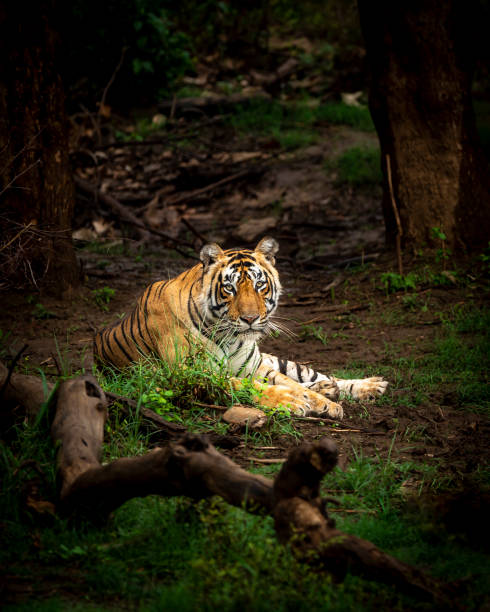
Sariska Tiger Reserve is a tiger reserve in Alwar district, Rajasthan, India. It stretches over an area of 881 km2 (340 sq mi) comprising scrub-thorn arid forests, dry deciduous forests, grasslands, and rocky hills. This area was a hunting preserve of the Alwar state and was declared a wildlife sanctuary in 1958. It was given the status of a tiger reserve making it a part of India’s Project Tiger in 1978. The wildlife sanctuary was declared a national park in 1982, with a total area of about 273.8 km2 (105.7 sq mi). It is the first reserve in the world with successfully relocated tigers. It is an important biodiversity area in the Northern Aravalli leopard and wildlife corridor.
The park is situated 106 km (66 mi) away from Hindaun, 107 km (66 mi) from Jaipur and 200 km (120 mi) from Delhi. It is a part of the Aravalli Range and the Khathiar-Gir dry deciduous forests ecoregion. It is rich in mineral resources, such as copper. In spite of the Supreme Court’s 1991 ban on mining in the area, marble mining continues to threaten the environment.
Apart from the Bengal tiger, the reserve harbours many wildlife species including Indian leopard, jungle cat, caracal, striped hyena, golden jackal, chital, sambar deer, nilgai, wild boar, small Indian civet, Javan mongoose, ruddy mongoose, honey badger, Rhesus macaque and Northern plains gray langur and Indian hare. Bird species present include grey partridge, white-throated kingfisher, Indian peafowl, bush quail, sandgrouse, treepie, golden-backed woodpecker, crested serpent eagle and the Indian eagle-owl.[citation needed]
In 2003, 16 tigers lived in the reserve. In 2004, it was reported that no tigers were sighted in the reserve, and that no indirect evidence of tiger presence was found such as pug marks, scratch marks on trees, scats. The Rajasthan Forest Department explained that “the tigers had temporarily migrated outside the reserve and would be back after monsoon season”. Project Tiger staff backed this assumption. In January 2005, it was reported that there were no tigers left in Sariska.
In July 2008, two tigers from Ranthambhore National Park were relocated to Sariska Tiger Reserve. Another female tiger was relocated in February 2009.
In 2012, two tiger cubs and their mother were spotted in the reserve bringing the total number of tigers to seven with five adults.In July 2014, two more cubs were spotted, so that there were 11 tigers in total.
As of October 2018, there were 18 tigers including five cubs. By 2020, the tiger population in the reserve has risen to 20.
Importance
It covers an area of 800 sq km in total, with a core area of approximately 500 sq km. Sariska was declared a sanctuary in 1955, and it became a National Park in 1979.
Best Time To Visit
Sariska Tiger Reserve is a Wildlife destination. The best time to visit Sariska Tiger Reserve is October, November, December, January and February. Since this is the peak season expect a little crowd during this time. July, August and September period experiences moderate weather.